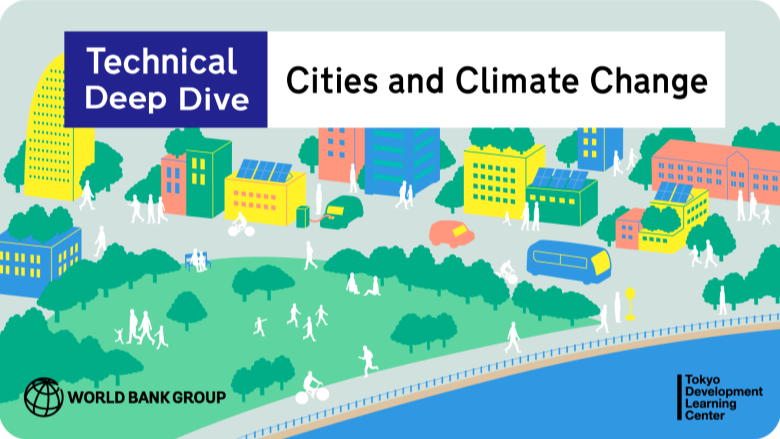
The World Bank Tokyo Development Learning Center (TDLC) in collaboration with the Sustainable City Infrastructure and Services Global Solutions Group (GSG), the Global Facility for Disaster Reduction and Recovery (GFDRR), the Disaster Risk Management and Resilience GSG, and the Climate-Smart Cities Community of Practice (CoP) is organizing a Technical Deep Dive (TDD) on Cities and Climate Change from April 17 to 21, 2023.
Activities in cities are responsible for around 70 percent of greenhouse gas emissions, giving cities an important role to play in mitigating climate change. CO2 levels in cities could double by 2050 with no mitigation efforts, however, levels could be reduced to nearly zero emissions with aggressive and immediate mitigation efforts. While cities in low- and middle-income countries have contributed minimally to climate change, they must now act quickly to ensure that they remain on low-carbon trajectories despite their projected increase in urban populations in the coming decades.
Cities are already disproportionately impacted by coastal flooding, extreme heat, and other hazards that are exacerbated by climate change. As urban populations continue to rise in areas highly vulnerable to climate change such as South Asia and Africa, cities must adapt to climate change and enhance their resilience.
Through this TDD, World Bank client country delegations, government officials, urban specialists and public and private sector practitioners, among others will have the opportunity to connect and develop a deeper understanding of good practices in urban climate adaptation and mitigation, including transit-oriented development and resilient infrastructure, nature-based solutions, resilient and energy-efficient buildings, and solid waste management. Furthermore, the TDD is organized into sectoral themes by which the presentations and site visits will emphasize cross-sectoral actions and integrate elements of social inclusion and participation, highlighting how individual investments can address several climate goals simultaneously. To make the sessions more tangible and linked to the site visits, they will focus on spatial planning and physical investments in the built and natural environment.